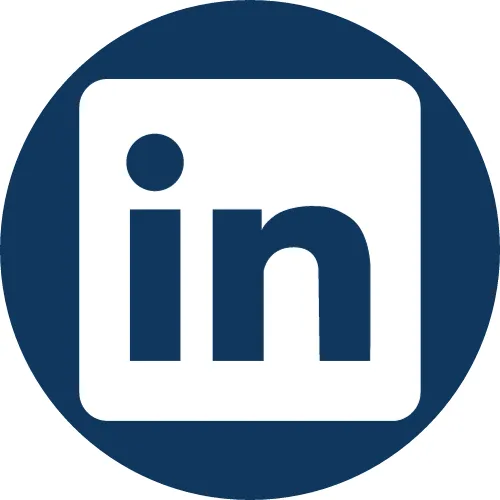

ON THE BLOG

Building Your Retirement Savings: Beginner’s Guide
Building Your Retirement Savings: Beginner’s Guide
Introduction:
Do you have a plan for retirement? If not, don’t worry—we’ve got you covered! The sooner you start saving, the more secure your future will be. With the right strategies, even small contributions can grow into a substantial nest egg. Let’s break down everything you need to know about saving for retirement, from getting started to choosing the right investment options.

Why Start Saving for Retirement Now?
The best time to start saving? Yesterday! The second-best time? Right now.
The earlier you begin, the less money you need to set aside to reach your goals. Thanks to compound interest, your savings generate earnings, and those earnings generate even more earnings over time.
The Power of Compound Interest
Instead of just earning interest on the money you deposit, you also earn interest on the interest you've already earned. This creates a snowball effect where your savings keep increasing without you having to add more money.
Simple Example:
Imagine you invest $1,000 at a 5% annual interest rate:
✅ After 1 year: You earn $50, bringing your total to $1,050.
✅ In Year 2: You earn 5% on $1,050, which is $52.50, making your total $1,102.50.
✅ Over time: Your money keeps growing faster because you're earning interest on a bigger and bigger amount.
The takeaway? The longer you let compound interest work for you, the more wealth you can build—even with small contributions!
Example: Early vs. Late Investing
A 22-year-old earning $40,000 per year who contributes 10% of their salary to retirement, plus a 3% employer match, could accumulate $1.7 million by age 65.
But if they wait until age 32 to start, they may only amass $780,000—less than half of what they could have had by starting earlier.
How to Start Saving for Retirement
Retirement accounts can seem overwhelming, but they’re simpler than they appear. Here’s a breakdown of your best options:
Employer-Sponsored Plans: 401(k)s and 403(b)s
A 401(k) (for private sector employees) and a 403(b) (for nonprofit and educational employees) allow pre-tax contributions from your paycheck.
Traditional 401(k): Pay taxes when you withdraw money in retirement.
Roth 401(k): Pay taxes now, but enjoy tax-free withdrawals in retirement.
Pro Tip: If your employer offers a 401(k) match, contribute at least enough to get the full match—this is essentially free money!
Individual Retirement Accounts (IRAs)
If your employer doesn’t offer a retirement plan, or you want to save more, consider an Individual Retirement Account (IRA):
Traditional IRA: Contributions may be tax-deductible, and you pay taxes upon withdrawal.
Roth IRA: Contributions are made with after-tax money, but withdrawals in retirement are tax-free.
SEP IRA: A tax-advantaged option for self-employed individuals and small business owners.
For 2024, the IRA contribution limit is $7,000 ($8,000 if you’re over 50).
How Much Should You Save for Retirement?
A good rule of thumb: Save 15% of your pre-tax income each year.
This includes employer contributions, so if your company offers a 3% match, you only need to save 12% yourself.
Can’t save 15% yet? Start with what you can and increase over time—especially when you get a raise!
What If Your Employer Doesn’t Match Your 401(k)?
If your employer doesn’t offer a match, consider prioritizing a Roth IRA before contributing to a 401(k). Since Roth IRA withdrawals are tax-free, they’re especially valuable for young savers who expect their income (and tax rate) to rise over time.
💡 Once you max out your IRA, return to your 401(k) and contribute as much as you can (the 2024 limit is $23,000).
Understanding Risk and Investing Wisely
Your investment strategy should reflect your age and risk tolerance:
📈 In your 20s and 30s: Higher-risk, higher-reward investments like stocks offer the best long-term growth potential.
📉 As you near retirement: Shift towards safer investments like bonds.
Should You Pick Your Own Stocks?
Research shows that index funds and ETFs often outperform actively picked stocks over time. These funds:
✅ Track a broad market (like the S&P 500).
✅ Offer strong long-term performance.
✅ Come with lower fees.
A Well-Diversified Portfolio Should Include:
✅ U.S. stocks (large-cap, mid-cap, small-cap)
✅ International stocks
✅ Bonds (as you get older)
💡 If unsure, consider:
Target-date funds (automatically adjust risk over time).
Robo-advisors like Betterment or Wealthfront.
Automate and Optimize Your Savings
One of the easiest ways to build wealth? Automation!
Set up automatic contributions to your 401(k) or IRA.
Use auto-increase features so every time you get a raise, a portion goes to your retirement.
The key to success? Stay consistent and let time do the work for you!
Final Thoughts
Saving for retirement may seem daunting, but taking small steps today can make a huge difference in the future. Start with your employer’s 401(k) match, contribute to an IRA, and gradually increase your savings rate over time. By making smart investments and staying consistent, you’ll set yourself up for a comfortable and financially secure retirement.
The best day to start saving was yesterday. The second-best day is today!
Need expert help with tax planning and retirement strategies?
Our team at Choice Accounting Partners can help you make the most of your savings.
📌 Follow us for more tax and financial tips and share this with someone who needs to start saving for their future!





